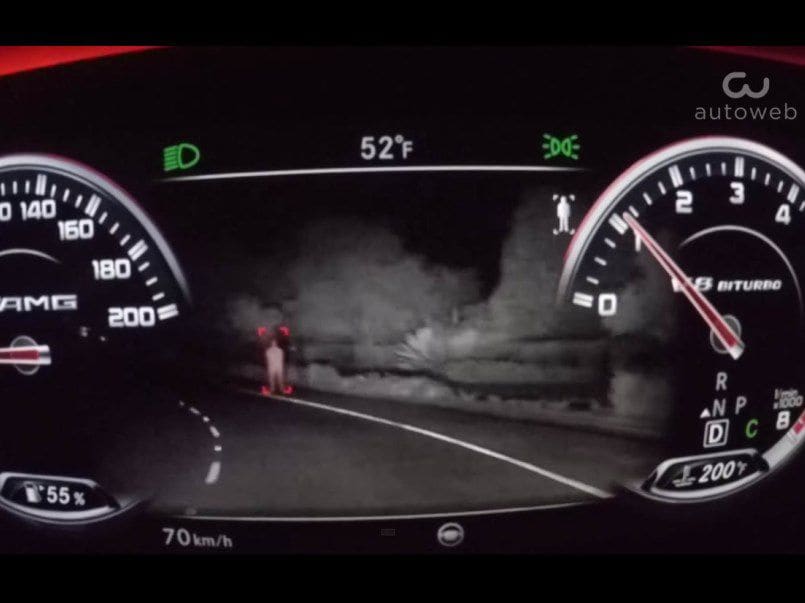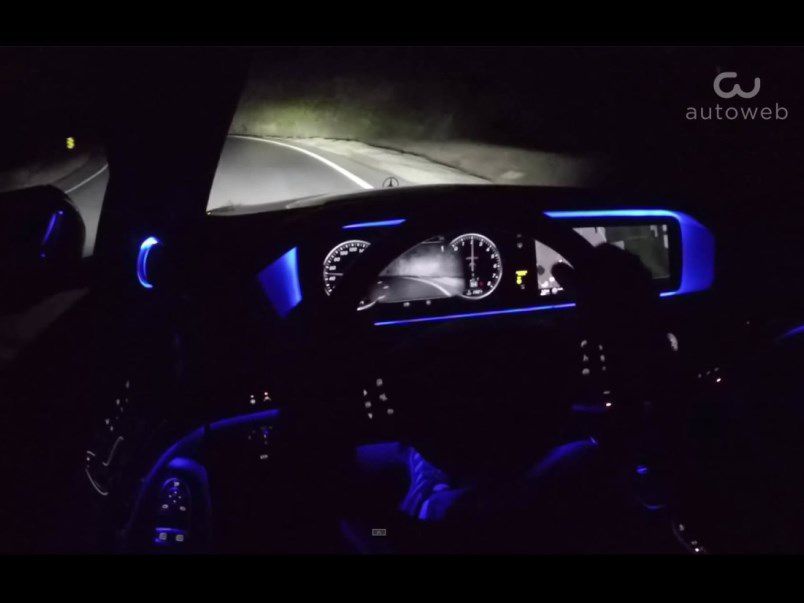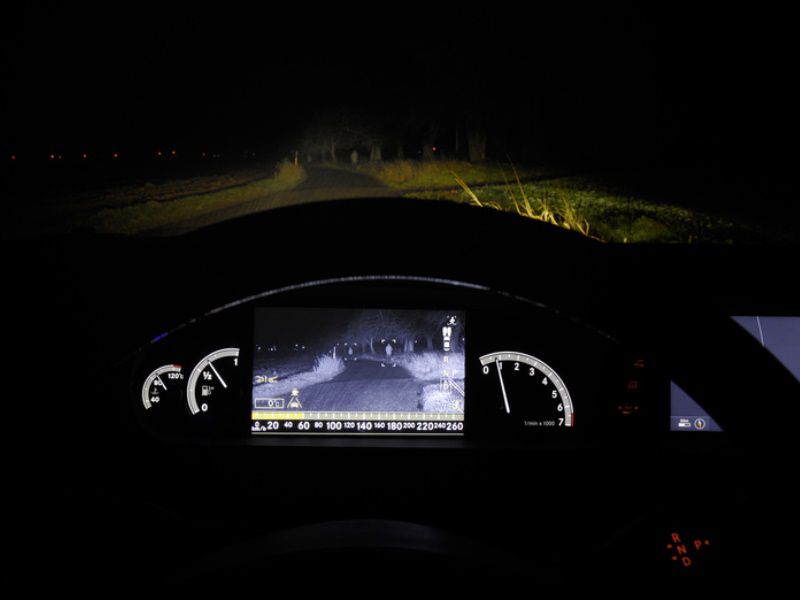Recent Articles
Popular Makes
Body Types
What is Mercedes Night View Assist with Spotlight Function

feature Technology Mercedes Benz Night Assist 001 1240x826
Many of the higher-end vehicles from Mercedes-Benz, BMW, Audi, Rolls-Royce, and Cadillac are offered with an innovative night vision system for improved visibility from the driver’s seat. These systems reach far beyond the range of typical headlights so that drivers can “see” through darkness, smoke or fog.
AutoLiv, the company behind the technology, is the world’s largest automotive safety supplier of steering wheels, airbags, seatbelts, passive and active safety systems. The firm also manufactures camera and radar systems, including night vision.
We tested Mercedes-Benz's adaptation, called Night View Assist Plus with Spotlight Function, on the 2015 S-Class. Mercedes was an early adopter of the technology, rolling out Active Night View Assist Plus in 2009. Today’s system, which adds the Spotlight Function, is the result of six more years of continuous refinement.
S-Class Digital Instrument Cluster
The S-Class with Night View Assist Plus with Spotlight Function is fitted with both hardware and software that includes infrared emitters in the LED headlight buckets, a windscreen-mounted infrared camera designed to read infrared light, and a second infrared camera mounted in the front grille of the vehicle using heat detection to identify and detect pedestrians and animals on, or near the road ahead. The digital data is processed by an electronic control unit, which interprets the information and determines the alert level for the driver and the pedestrian.
Drivers have to initiate the Mercedes-Benz system by pressing a dashboard button and activating the Adaptive Highbeam Assist by pressing the stalk forward. The S-Class has a digital instrument cluster, which configures to show a video view of the road ahead.

Pedestrian Detection
Active Night View Assist Plus with Spotlight works automatically to scan the road ahead. If a pedestrian or any warm-blooded creature, for that matter, is spotted — the infrared cameras are engineered to detect heat against a cold background — they are highlighted with a red box on the instrument display. The display also briefly blinks red, to alter the driver.
Simultaneously, the people on or near the road are automatically flashed with the spotlight function of the headlight — the light is designed to alert, not blind, the pedestrian. This actively identifies the potential danger to the driver as well as alerting the pedestrian that the vehicle is approaching.
I used Active Night View Assist Plus with Spotlight every evening for nearly two weeks. I live in a rural suburban part of Los Angeles, with plenty of pedestrian-friendly streetlights. Even so, it was fascinating to watch the system blink warnings to pedestrians as it highlighted them in red boxes on the dashboard. My neighborhood wasn’t a difficult challenge, but those who live in more rural areas, or have frequent bouts of inclement weather, will find it extremely helpful — the darker the road, the more effective the system becomes.

Human Sight is Less Effective in Reduced Ambient Illumination
Digital night vision systems for automobiles are crucial, as human eyes are not well suited for driving at night. The pedestrian fatality rate is four times higher after the sun drops below the horizon. Following such accidents, most drivers claimed that they simply didn’t see people or animals on the side of the road.
Scientists have determined that human sight is less effective in reduced ambient illumination. Not only do eyes suffer from contrast sensitivity, they also exhibit “night myopia” by focusing too near and causing distant objects to blur. Focal vision, the type of sight that detects and recognizes objects, declines rapidly in dim light. Although drivers are fully capable of steering a vehicle down a dark road, pedestrians and animals are nearly invisible to even the best drivers.
Night vision systems, complementing an attentive driver, appear to be the ideal combination. As technologies such as Night View Assist Plus with Spotlight from Mercedes-Benz become commonplace and trickle down to less expensive automobiles, fatalities, injuries and property damage should decline — good news to drivers and pedestrians alike.
